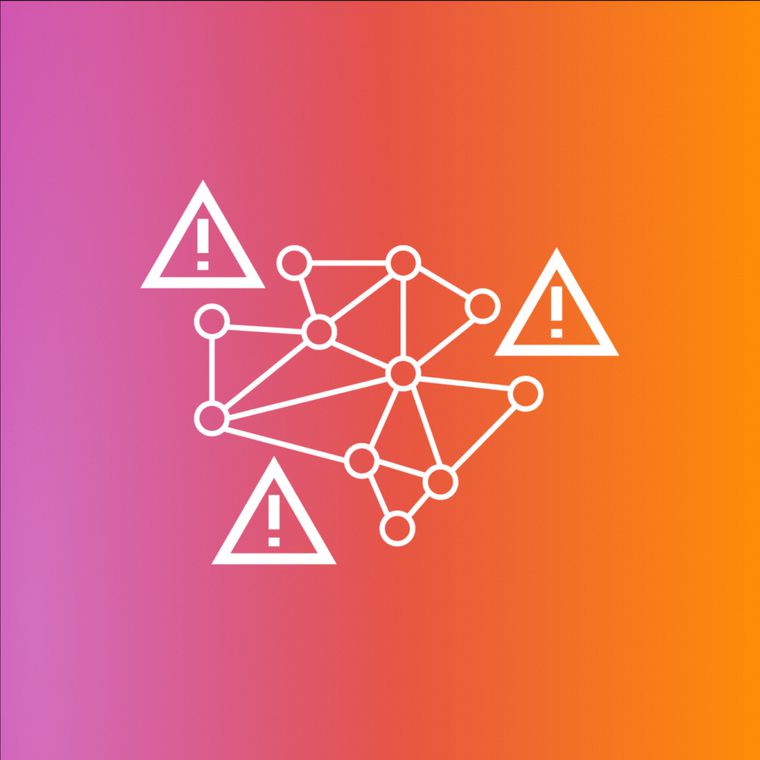API Based Email Security: Must-Have Features
See how API based email security works and the features that give your inbox stronger protection.
August 11, 2025
Traditional secure email gateways can’t see inside the inbox, leaving organizations exposed. Attackers exploit this blind spot with clean, text-only emails that bypass filters and cause damage once delivered. That’s why security teams are replacing gateways with API-based platforms integrated directly into Microsoft 365 and Google Workspace.
These platforms detect threats that traditional gateways miss, including time-delayed links, polymorphic payloads, and attacks from compromised internal accounts, and remove malicious emails after delivery. With continuous monitoring and real-time anomaly detection, they close critical security gaps. This article breaks down the five essential capabilities CISOs must demand in an API-based email security solution.
Why Traditional Email Security Falls Short
Traditional email security operates on a fundamental flaw: once messages reach your inbox, protection stops. Let’s understand a bit more about the underlying reasons:
Signature-Based Detection Only Catches Known Threats: Static rules fail against modified malware and zero-day attacks, leaving organizations vulnerable to new attack variants that bypass recognition-based filters completely.
Perimeter-Only Visibility Creates Massive Blind Spots: Internal emails from compromised accounts bypass all security scanning, enabling lateral phishing and account takeover attacks to spread undetected throughout organizations.
No Post-Delivery Remediation Capability: Security teams waste hours manually hunting down malicious emails across thousands of inboxes while genuine threats remain active and continue causing damage.
High False Positives Overwhelm Security Teams: Excessive alerts create analyst fatigue and prevent teams from focusing on genuine threats, reducing overall security effectiveness and response times.
Social Engineering Attacks Slip Through Easily: Text-only BEC scams and wire fraud requests appear completely benign to content scanners, allowing financial fraud to succeed without triggering any security alerts.
Compromised Vendors: These pose particular risks since their messages originate from trusted domains that gateways allow by default. The architecture simply cannot solve cloud-based email problems that require continuous, internal monitoring.
What Makes API-Based Email Security Different
API-based email security transforms protection from a perimeter checkpoint into continuous monitoring that works inside your cloud email platform. Instead of forcing traffic through external filters, these solutions integrate directly with Microsoft 365 and Google Workspace using native APIs.
The architectural advantages are immediate. Cloud-native deployment completes in minutes without touching MX records or disrupting mail flow. Users experience zero added latency while gaining protection that covers inbound, outbound, and internal messages. The platform examines every communication on an ongoing basis rather than taking point-in-time snapshots at delivery.
Continuous mailbox access enables capabilities that perimeter tools cannot match. New threat intelligence applies instantly to previously delivered messages. The system re-evaluates emails judged safe this morning against fresh indicators at noon. Post-delivery remediation automatically removes malicious messages from every affected inbox, shrinking the danger window to minutes.
Native integration through Microsoft Graph and Google Workspace APIs provides unified coverage without additional infrastructure. The same connections extend protection to collaboration data in SharePoint, OneDrive, and Drive, creating comprehensive security that scales with your communication patterns.
1. Behavioral Anomaly Detection
Behavioral anomaly detection creates a living model of normal communication patterns that instantly flags any message, login, or action falling outside established baselines. The platform studies every email platform to learn the unique communication fingerprint for each employee, group, and vendor.
Here are the steps in this feature:
Historical Data Analysis Builds Comprehensive Baselines: The system analyzes months of email patterns, including communication frequency, device usage, and geographic locations, to establish normal behavior profiles for detecting subtle anomalies.
Machine Learning Creates Behavioral Graphs: Advanced algorithms map language styles, attachment patterns, and financial workflows into detailed behavioral models that identify deviations indicating potential security threats or compromises.
Context-Aware Scoring Catches Sophisticated Threats: Vendor invoices arriving early from unusual IP addresses with unfamiliar language patterns trigger immediate anomaly alerts that signature-based systems would completely miss.
Real-Time Evaluation Extends Beyond Email Content: The platform continuously monitors impossible-travel logins, new forwarding rules, and unusual outbound message volumes to detect account takeover attempts across multiple attack vectors.
Automated Response Eliminates Manual Triage: When anomaly scores exceed predefined thresholds, automated playbooks instantly quarantine suspicious emails, alert security teams, and initiate password resets without requiring human intervention.
Overall, this approach excels at uncovering threats without obvious malicious markers.
2. Post-Delivery Remediation
Post-delivery remediation provides the critical capability to eliminate threats discovered after initial delivery, often making the difference between contained incidents and widespread breaches. Traditional systems leave organizations helpless once malicious messages reach inboxes.
API-based solutions maintain continuous access to every mailbox through Microsoft Graph, Gmail, and other native APIs. When new threat intelligence emerges, the platform creates comprehensive incidents linking every instance of malicious messages across the organization. One-click removal commands delete, move, or quarantine each copy through the same APIs that delivered them originally.
These operations run directly within the cloud service, avoiding mail flow disruptions or the need for complex infrastructure changes. The improvement in efficiency is significant. Manual cleanup can take up to eight hours of tracking recipients, recalling emails, and recording actions. With API-driven automation, the same process is completed in minutes and without human error. This speed not only accelerates containment but also helps prevent account compromises, lowers help desk volume, and allows analysts to focus on proactive security initiatives.
3. Native Integration With Microsoft 365 and Google Workspace
Seamless integration with Microsoft 365 and Google Workspace is essential for effective API-based email security. By connecting directly to these cloud platforms, security tools can inspect and protect messages where they reside, without rerouting or delaying delivery.
This approach preserves user experience while enabling advanced capabilities, including:
OAuth Authentication Provides Least-Privilege Access: Administrators grant specific permissions, like Mail.Read and Mail.ReadWrite during streamlined onboarding, ensuring security platforms access only necessary data while maintaining complete audit trails.
Zero Infrastructure Requirements: No additional hardware, DNS modifications, or MX record changes needed, eliminating deployment complexity and reducing the risk of mail flow disruptions during implementation.
Immediate Deployment Benefits: Cloud-native setup completes in minutes versus days of complex gateway reconfiguration, enabling rapid threat protection without extended vulnerability windows during migration periods.
Comprehensive Visibility Across All Traffic: Continuous monitoring covers inbound, outbound, and internal communications that perimeter tools cannot see, providing complete organizational email security coverage and threat detection.
Extended Protection To Collaboration Platforms: Same API connections secure Teams, Slack, SharePoint, OneDrive, and Drive communications without requiring separate tools, creating unified security across all business communication channels.
4. Visibility Into Lateral Phishing and Internal Threats
Internal visibility closes one of the biggest gaps in traditional email security: attacks that originate inside the organization. Compromised accounts can send convincing phishing emails to colleagues, using insider knowledge to bypass detection and spread quickly. Because secure email gateways only scan perimeter traffic, they miss these internal communications entirely.
API-based solutions solve this by analyzing all mailbox content, including internal messages, to spot signs of account takeover, lateral movement, or policy violations. They flag unusual sending patterns, changes in tone, and abnormal access to sensitive files, as well as attempts to forward confidential data externally.
This level of monitoring not only stops internal phishing campaigns but also supports compliance with regulations like HIPAA, SOX, and GDPR, giving organizations protection against both external actors who gain internal access and genuine insider threats that legacy tools cannot detect.
5. Automated Detection and Response at Scale
Automation removes manual bottlenecks, enabling security teams to match the speed and volume of modern email threats. Here’s how:
Real-Time Threat Scoring Processes Massive Email Volumes: Machine learning algorithms evaluate every message against behavioral baselines and current threat intelligence, enabling instant risk assessment that scales with organizational email traffic.
Automated Incident Creation Links Related Threats: The platform automatically connects malicious messages across all affected mailboxes, creating comprehensive incident reports that accelerate response times and improve threat containment effectiveness.
Native API Commands Enable Instant Remediation: Recall, quarantine, and deletion commands execute directly through cloud provider APIs, ensuring immediate threat removal without disrupting normal email operations or requiring manual intervention.
SIEM and SOAR Integrations Orchestrate Broader Responses: Enriched security alerts automatically flow to security tools, enabling coordinated responses like account lockdowns and IP blocking.
Continuous Model Updates Maintain Detection Accuracy: Machine learning algorithms automatically improve threat detection capabilities without requiring patch cycles, infrastructure changes, or system downtime that disrupt security operations.
These workflows scale naturally with email volume rather than creating bottlenecks. Whether processing thousands or millions of messages daily, the platform maintains consistent performance while reducing mean time to remediate from hours to minutes. This way, fewer false positives reach analysts, alert queues remain manageable, and security teams regain bandwidth for strategic projects.
How Abnormal Delivers All Five Essential Features
Abnormal fulfills the essential criterion for API-based email security through seamless Microsoft 365 integration that detects abnormal behavior across email, identity, and collaboration tools. The platform's Behavioral Graph Intelligence uses advanced AI to assess communication patterns and identify anomalies signifying security threats.
Abnormal extends protection beyond email to environments like Slack and Teams, providing cross-channel coverage that traditional solutions cannot match. Rapid deployment completes with minimal operational impact, reducing complexity so security teams can focus on strategic initiatives.
Ready to transform your email security with API-based protection? Book a demo to see how Abnormal delivers all five essential capabilities at enterprise scale.
Related Posts
Get the Latest Email Security Insights
Subscribe to our newsletter to receive updates on the latest attacks and new trends in the email threat landscape.


